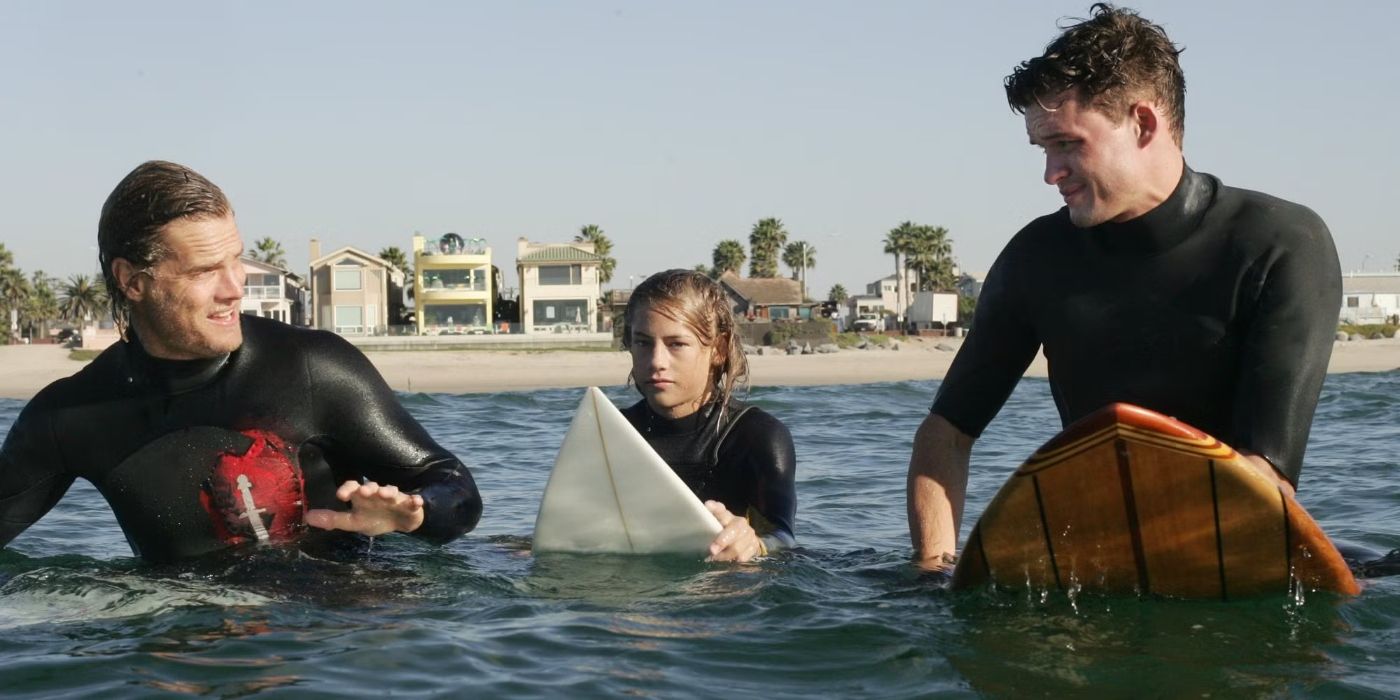
Back in 2007, when I first heard about “John from Cincinnati” premiering on HBO, the excitement was palpable. The show was the joint creation of novelist Kem Nunn and David Milch, a renowned TV writer whose previous HBO series, “Deadwood,” had redefined television’s capabilities. With “Deadwood’s” cancellation after three seasons, everyone, viewers and critics alike, were eagerly waiting to see what Milch would come up with next. What he delivered was a show that was not only mystical but also deeply enigmatic, which left many viewers puzzled and even hostile.
The TV series titled “John from Cincinnati” initially failed to impress, receiving mostly unfavorable reviews and getting canceled after just one season. Although certain aspects of the show have gained recognition over time, it’s challenging to justify labeling it as an unappreciated masterpiece. Despite its significant flaws, the storyline of characters grappling with the enigmatic resonates as a subtle precursor to shows like “The Leftovers,” which tackled similar themes more effectively seven years later. Moreover, its SoCal surfer world ambiance foreshadows AMC’s “Lodge 49,” where an eclectic group of individuals finds themselves entangled in a larger mystery.
‘John from Cincinnati’s Endless Bummer Summer



To start off, it’s clear that things are far from ideal for the Yost family, a renowned surfing lineage residing in the Southern California border town of Imperial Beach. The patriarch, Mitch Yost (portrayed by Bruce Greenwood), had to retire from competing due to a harrowing knee injury and now takes to the waves only during the wee hours when others are absent. Mitch’s son, Butchie (played by Brian Van Holt), was once a promising figure in surfing, but currently finds himself struggling with addiction to heroin. The bond between Mitch and his wife, Cissy (Rebecca De Mornay), is strained, and she has developed a habitual defensive demeanor.
In this situation, Shaun, a 14-year-old surfer and skater (Greyson Fletcher in real life), appears satisfied with his life, primarily because he loves surfing and skating. However, tranquility is disrupted by the arrival of an enigmatic young man named John (Austin Nichols). This stranger communicates only through repetition but possesses abilities that seem otherworldly and has a plan for the Yost family. Following his arrival, unusual incidents begin to occur. Shaun inexplicably survives a severe accident, Butchie seems to be freed from his addiction, and Mitch starts levitating slightly off the ground. A group of people gathers around an old, dilapidated motel, with the Yost family and their allies appearing to play a part in the impending transformation, whatever it may entail.
The series presents an intriguing blend of elements. Although its overall narrative can be challenging to follow, it encourages viewers to join in the adventure, just like the characters who are also clueless about the larger picture. The Yost family is exceptionally dysfunctional, bordering on the absurd, constantly undermining each other with harsh words and even using racial slurs casually – a common trait of certain HBO shows from the mid-2000s.
Perhaps the intention was to make the Yosts as flawed as possible for their eventual redemption, but it can be challenging to want to spend much time with them because of their difficult personalities.
In this series, it’s the diverse group of characters, often referred to as the Yosts’ supporting crew, who truly make it shine. Characters like Ramon (Luiz Guzmán), the motel caretaker, “surfing attorney” Meyer Dickstein (Willie Garson), and retired cop Bill Jacks (Ed O’Neill) keep the story afloat. The series particularly sparkles when the family drama takes a backseat to a more relaxed style filled with humor. Scenes featuring Ed O’Neill, who frequently communicates with his pet birds at home, are some of the most delightful in the show, offering a perfect blend of absurdity and heartfelt emotion.
‘John from Cincinnati’s Stealth Influence



It’s uncertain if John from Cincinnati had any significant impact on shows like The Leftovers, but its brief run paved the way for these series to delve into life’s enigmas. The Leftovers is adapted from Tom Perrotta’s 2011 novel of the same name, which employs the inexplicable vanishing of 2% of Earth’s population as a backdrop to depict how ordinary individuals cope when confronted with something that transcends logical explanation. Many react with despair, either drifting aimlessly through their lives or joining groups like the Guilty Remnant, which claim to offer comfort in the face of such unexplained events.
The Leftovers adopts an unusual perspective, yet the underlying concept remains consistent: the decisions individuals make when their perception of reality and their position in the cosmos undergoes a dramatic shift. The series’ characters react to this upheaval by abandoning their old lives, either joining a cult or relocating to Jarden, Texas, a town that gains significance as it’s revealed that none of its inhabitants were affected by the disappearances.
In contrast to The Leftovers, which is heavily influenced by existential despair, John from Cincinnati adopts a more hopeful perspective. Characters in this series tend to adapt to changes gracefully, forming an unlikely family. They embrace their roles within a vision that transcends them personally. This narrative style shares similarities with Lodge 49, where characters who are deeply lost find meaning and purpose within the lodge community and among each other.
John from Cincinnati might seem chaotic at first glance, yet in its quiet instances, it offers a glimpse of what Milch and Nunn aspired for. The profound mystery of our role in the cosmos remains elusive, but keeping an open mind is crucial to understanding potential realities. While Milch and Nunn may have bitten off more than they could chew, their complex, ambitious, sometimes profound series seems like a relic from a time when TV shows were unafraid to explore deep themes without simple resolutions.
Read More
- Unleash Your Heroes’ True Potential: Best Stadium Builds for Every Overwatch 2 Hero
- 50 Goal Sound ID Codes for Blue Lock Rivals
- Lucky Offense Tier List & Reroll Guide
- Elder Scrolls Oblivion: Best Mage Build
- Elder Scrolls Oblivion: Best Spellsword Build
- Unlock All Avinoleum Treasure Spots in Wuthering Waves!
- Best Crosshair Codes for Fragpunk
- SWORN Tier List – Best Weapons & Spells
- 50 Ankle Break & Score Sound ID Codes for Basketball Zero
- Elder Scrolls Oblivion: Best Rogue Build
2025-04-27 17:34